The rumour factory had been doing overtime in the week that Safeway's marketing and trading director sat down to do his first major interview since taking up his post. But when asked about the reports that Wal-Mart was about to launch a takeover bid - and. more ominously, that Safeway was about to issue a profit warning - Jack Sinclair simply shrugged.
After 12 years in the business, Sinclair says he has come to the conclusion that Safeway is one of those British companies around which takeover rumours will always swirl.That's hardly surprising, given Safeway itself held merger talks with Asda at the end of the 1990s. But Sinclair points out that the chain is now committed to remaining an independent supermarket operator. "We are very ambitious about the future and the only way to achieve our ambition is to be independent," he says.
Fair enough. But what about Safeway's trading performance? In particular, isn't the chain worried about the fact that all the available data highlights the fact it is losing market share to rival operators? The figures can make for grim reading, but Sinclair insists that commentators have lost sight of where Safeway is in its recovery programme.
"We have failed to get the message over that two-and-a-half years ago we made a conscious decision to stop our new store programme because we wanted to develop formats that were distinct and better than anything in the market. We have made some progress on the formats. But there are clear market share implications."
What really matters, says Sinclair, is which retailers are winning the battle store by store, community by community. "We feel pretty confident that when we get our best foot forward we can win that battle against anybody," he says.
By deciding to focus on local performance, adds Sinclair, Safeway always knew its national market share figure would not go forward. And he adds: "Given the amount of new space being put down by our competitors, it's of little surprise what our market share figures are saying. It amazed us that we held our own as long as we did."
But he stresses that Safeway is not being complacent. "Market share is important because it brings you scale to compete and you can't ignore that. It's important to us but not right this second. Over a period of time that will build back. We believe that by opening some of the most exciting stores in Great Britain we can get market share growing."
Even Safeway's fiercest critics agree that the multiple has been rolling out some pretty impressive formats over the past couple of years. Megastores, Fresh to Go superstores and supermarkets and convenience' stores are now all open for business  and are helping add some real pizzazz to the British retail scene.
The results from these reformatted stores are equally impressive  seeing an average sales uplift of about 10% in the second half of the last financial year. About a quarter of Safeway's estate has been converted, and Sinclair admits it will take "a lot of capital, energy, effort and time" to change the remainder.
Underpinning the format work is the New Safeway philosophy of being best at fresh, best at availability, best at customer service and having the best deals.
Pulling all of this together and making it happen in stores is at the heart of Sinclair's role  a new post at Safeway to which he was promoted in May. In short, he is charged with the task of "making the formats come alive". Sinclair adds: "My role is about ensuring we have the appropriate ranges in the right place at the right time, and are pricing appropriately for the different format requirements."
All of which is a lot easier said than done. No retailer could ever claim to have a perfect store portfolio. But Safeway is more challenged than most in this respect, with stores as far north as Lerwick on the Shetland Islands, as far south as St Helier in the Channel Islands, and at practically all points in between. As a result, there is a vast range of store sizes in its portfolio and they serve wildly different customer demographics.
"Some would say this is a weakness of this business, but this great diversity is a competitive strength," insists Sinclair.
The implication of all this for Safeway, he says, is that there is no homogeneous solutions when it comes to building New Safeway.
Even the promotional flyer that was at the heart of its original moves into the world of high:low retailing is evolving. The multiple is still sending out nine million flyers a week. That has not changed. And Sinclair insists the much-copied flyers remain as "the most effective tool for driving volume in the market", which is why he says suppliers love them so much.
But the content of these flyers  and the instore offers  are being adapted to suit format and location. The size and composition of the store clusters through which the deals are delivered have also been tweaked, so that Safeway is flexing its promotional spend to get the best returns.
When they were first launched, the flyers were a priority as Safeway focused on how best to get customers back into its stores. With almost three years' experience under their belt, Safeway's marketers know which flyers work best in what areas. They also know where the flyers have done their job and, having raised transaction levels in these stores, the focus is now very much on ways of increasing customer loyalty to the Safeway brand.
The beauty of high:low as practised by Safeway has always been that it does get shoppers into stores. But the multiple's challenge is encouraging them to buy more than simply what is on promotion.
That is where the new formats, new ranges and new price messages  notably the EDLP-esque Price Cuts All Year Round' mechanic  all come into play. Sinclair accepts that Safeway is now evolving its high:low strategy, but says its EDLP competitors are doing likewise. "EDLP versus high:low does not exist. There are now hybrid versions of both in the market," he adds.
And when it comes to building customer loyalty, Sinclair says Safeway's own customer research shows it is making progress in its four key strategic areas.
Neverthless, he admits there is still work to be done on customer service and on developing the ranges required for it to be seen as the best for fresh.
But on the latter point, he says Safeway and its suppliers have put an enormous amount of effort into range development, which has resulted in launches such as the Mediterannean, Eat Street and American lines. This activity will also be translated increasingly into Safeway's stores, with even more activity around key seasons and events such as Halloween and Christmas.
"A year ago we were catching up on ranging. But the things we are doing now are distinctly ours. This will be a key point of difference and will help drive loyalty to the Safeway brand," says Sinclair.
Clearly, with so much activity going on at the top end of the grocery market, the competition between retailers can only intensify. As a hardened grocery veteran with a keen competitive streak  honed during a career that has also included spells at the Shoppers' Paradise discount chain and Tesco  Sinclair clearly relishes that challenge.
And he says Safeway has all the elements in place needed to compete, with a clear strategy, a head office culture that is highly reactive to what is happening in the market, and highly motivated store managers who can make a real difference to its bottom line.
"Our business looks very different from the inside looking out than it does from the outside looking in. And we are feeling quite confident about it," he adds.
{{ANALYSIS }}
After 12 years in the business, Sinclair says he has come to the conclusion that Safeway is one of those British companies around which takeover rumours will always swirl.That's hardly surprising, given Safeway itself held merger talks with Asda at the end of the 1990s. But Sinclair points out that the chain is now committed to remaining an independent supermarket operator. "We are very ambitious about the future and the only way to achieve our ambition is to be independent," he says.
Fair enough. But what about Safeway's trading performance? In particular, isn't the chain worried about the fact that all the available data highlights the fact it is losing market share to rival operators? The figures can make for grim reading, but Sinclair insists that commentators have lost sight of where Safeway is in its recovery programme.
"We have failed to get the message over that two-and-a-half years ago we made a conscious decision to stop our new store programme because we wanted to develop formats that were distinct and better than anything in the market. We have made some progress on the formats. But there are clear market share implications."
What really matters, says Sinclair, is which retailers are winning the battle store by store, community by community. "We feel pretty confident that when we get our best foot forward we can win that battle against anybody," he says.
By deciding to focus on local performance, adds Sinclair, Safeway always knew its national market share figure would not go forward. And he adds: "Given the amount of new space being put down by our competitors, it's of little surprise what our market share figures are saying. It amazed us that we held our own as long as we did."
But he stresses that Safeway is not being complacent. "Market share is important because it brings you scale to compete and you can't ignore that. It's important to us but not right this second. Over a period of time that will build back. We believe that by opening some of the most exciting stores in Great Britain we can get market share growing."
Even Safeway's fiercest critics agree that the multiple has been rolling out some pretty impressive formats over the past couple of years. Megastores, Fresh to Go superstores and supermarkets and convenience' stores are now all open for business  and are helping add some real pizzazz to the British retail scene.
The results from these reformatted stores are equally impressive  seeing an average sales uplift of about 10% in the second half of the last financial year. About a quarter of Safeway's estate has been converted, and Sinclair admits it will take "a lot of capital, energy, effort and time" to change the remainder.
Underpinning the format work is the New Safeway philosophy of being best at fresh, best at availability, best at customer service and having the best deals.
Pulling all of this together and making it happen in stores is at the heart of Sinclair's role  a new post at Safeway to which he was promoted in May. In short, he is charged with the task of "making the formats come alive". Sinclair adds: "My role is about ensuring we have the appropriate ranges in the right place at the right time, and are pricing appropriately for the different format requirements."
All of which is a lot easier said than done. No retailer could ever claim to have a perfect store portfolio. But Safeway is more challenged than most in this respect, with stores as far north as Lerwick on the Shetland Islands, as far south as St Helier in the Channel Islands, and at practically all points in between. As a result, there is a vast range of store sizes in its portfolio and they serve wildly different customer demographics.
"Some would say this is a weakness of this business, but this great diversity is a competitive strength," insists Sinclair.
The implication of all this for Safeway, he says, is that there is no homogeneous solutions when it comes to building New Safeway.
Even the promotional flyer that was at the heart of its original moves into the world of high:low retailing is evolving. The multiple is still sending out nine million flyers a week. That has not changed. And Sinclair insists the much-copied flyers remain as "the most effective tool for driving volume in the market", which is why he says suppliers love them so much.
But the content of these flyers  and the instore offers  are being adapted to suit format and location. The size and composition of the store clusters through which the deals are delivered have also been tweaked, so that Safeway is flexing its promotional spend to get the best returns.
When they were first launched, the flyers were a priority as Safeway focused on how best to get customers back into its stores. With almost three years' experience under their belt, Safeway's marketers know which flyers work best in what areas. They also know where the flyers have done their job and, having raised transaction levels in these stores, the focus is now very much on ways of increasing customer loyalty to the Safeway brand.
The beauty of high:low as practised by Safeway has always been that it does get shoppers into stores. But the multiple's challenge is encouraging them to buy more than simply what is on promotion.
That is where the new formats, new ranges and new price messages  notably the EDLP-esque Price Cuts All Year Round' mechanic  all come into play. Sinclair accepts that Safeway is now evolving its high:low strategy, but says its EDLP competitors are doing likewise. "EDLP versus high:low does not exist. There are now hybrid versions of both in the market," he adds.
And when it comes to building customer loyalty, Sinclair says Safeway's own customer research shows it is making progress in its four key strategic areas.
Neverthless, he admits there is still work to be done on customer service and on developing the ranges required for it to be seen as the best for fresh.
But on the latter point, he says Safeway and its suppliers have put an enormous amount of effort into range development, which has resulted in launches such as the Mediterannean, Eat Street and American lines. This activity will also be translated increasingly into Safeway's stores, with even more activity around key seasons and events such as Halloween and Christmas.
"A year ago we were catching up on ranging. But the things we are doing now are distinctly ours. This will be a key point of difference and will help drive loyalty to the Safeway brand," says Sinclair.
Clearly, with so much activity going on at the top end of the grocery market, the competition between retailers can only intensify. As a hardened grocery veteran with a keen competitive streak  honed during a career that has also included spells at the Shoppers' Paradise discount chain and Tesco  Sinclair clearly relishes that challenge.
And he says Safeway has all the elements in place needed to compete, with a clear strategy, a head office culture that is highly reactive to what is happening in the market, and highly motivated store managers who can make a real difference to its bottom line.
"Our business looks very different from the inside looking out than it does from the outside looking in. And we are feeling quite confident about it," he adds.
{{ANALYSIS }}




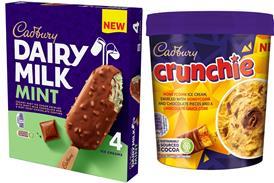





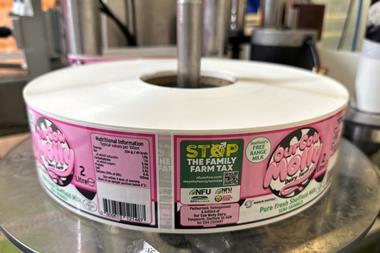


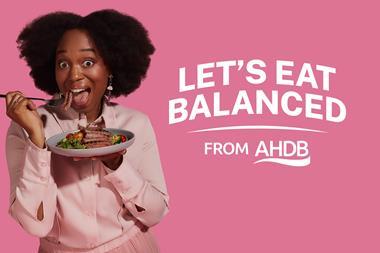
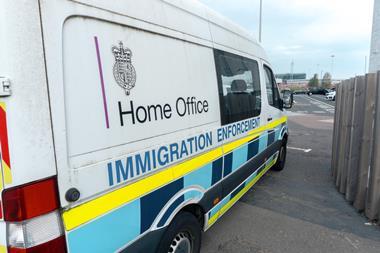
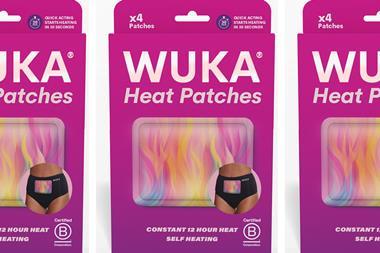
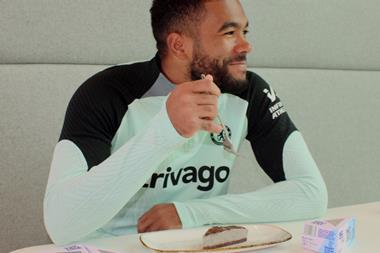
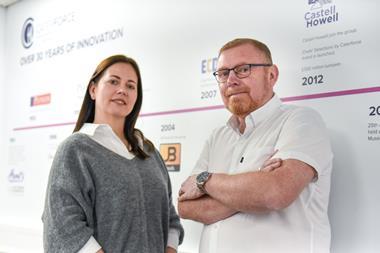
No comments yet